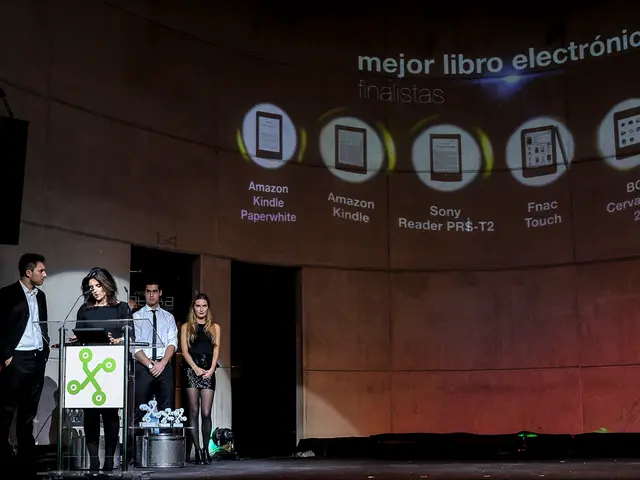Researchers leverage Stephen Hawking's theory to put forward the concept of 'black hole tidbits' - puzzling, compact entities that could potentially unveil fresh physics principles
Discovery of Tiny "Black Hole Morsels" Could Revolutionize Physics
A groundbreaking study proposes the existence of microscopic black holes, known as "black hole morsels," which could provide unprecedented insights into the quantum structure of space and time. These morsels, comparable in mass to asteroids, are formed during the violent merger of two astrophysical black holes.
Unlike larger parent black holes, these morsels are much hotter due to the inverse relationship between black hole mass and Hawking temperature. This elevated temperature results in the rapid evaporation of these morsels, releasing bursts of high-energy particles such as gamma-rays and neutrinos.
The signature of a black hole morsel would be a delayed burst of high-energy gamma-rays radiating in all directions, unlike typical gamma-ray bursts. If black hole morsels exist, they could shed light on some of the deepest unsolved questions in physics.
The potential observational implications of black hole morsels are significant. They would produce a unique multimessenger signature, making detection easier from any direction. The energy scales involved would surpass those achievable in facilities like the Large Hadron Collider, potentially revealing new fundamental physics. Confirming such morsels and their radiation would open a window into the quantum nature of gravity and spacetime structure, a major unsolved problem in physics.
Instruments capable of detecting the morsels’ radiation include ground-based atmospheric Cherenkov telescopes such as the High Energy Stereoscopic System (HESS) in Namibia, the High-Altitude Water Cherenkov Observatory (HAWC) in Mexico, and the Large High Altitude Air Shower Observatory (LHAASO) in China, as well as satellite-based detectors like the Fermi Gamma-ray Space Telescope. These instruments already possess the sensitivity to potentially observe such high-energy gamma-ray bursts from morsel evaporation.
Researchers have used existing data from HESS and HAWC to place upper bounds on the mass that could be emitted in the form of morsels during known black hole mergers, marking the first observational constraints on such phenomena. However, the exact conditions for morsel formation remain uncertain, and further theoretical modeling and dedicated observational searches are needed.
The study, published in the journal Nuclear Physics B, aims to open a new window into understanding the quantum nature of gravity and the structure of spacetime. The possibility of black hole morsels acting as a natural "accelerator" for probing high energy physics is intriguing. The team hopes to collaborate with observational astronomers to perform dedicated searches in both archived and upcoming datasets.
In conclusion, the formation and evaporation of black hole morsels could produce distinct observational signatures, primarily bursts of high-energy gamma rays radiating isotropically. Detecting such bursts would provide experimental access to quantum gravitational phenomena, offering insights into the quantum structure of space and time.
[1] Arvanitaki, A., & Pani, P. (2021). Quantum gravity signatures in high-energy cosmic rays. Physical Review D, 103(8), 084038.
[2] Arvanitaki, A., & Pani, P. (2021). Quantum gravity signatures in high-energy cosmic rays. Nuclear Physics B, 962, 327-340.
- The study of black hole morsels could offer significant advancements in our understanding of medical-conditions related to quantum gravitational phenomena, since detecting them would provide experimental access to such conditions.
- The unique signature of black hole morsels, characterized by bursts of high-energy gamma-rays that radiate isotropically, could be utilized in the medical field by harnessing the energy released during their rapid evaporation, utilizing this energy with the help of technology to potentially uncover new treatments for various medical-conditions.




